Archives
- By thread 5413
-
By date
- June 2021 10
- July 2021 6
- August 2021 20
- September 2021 21
- October 2021 48
- November 2021 40
- December 2021 23
- January 2022 46
- February 2022 80
- March 2022 109
- April 2022 100
- May 2022 97
- June 2022 105
- July 2022 82
- August 2022 95
- September 2022 103
- October 2022 117
- November 2022 115
- December 2022 102
- January 2023 88
- February 2023 90
- March 2023 116
- April 2023 97
- May 2023 159
- June 2023 145
- July 2023 120
- August 2023 90
- September 2023 102
- October 2023 106
- November 2023 100
- December 2023 74
- January 2024 75
- February 2024 75
- March 2024 78
- April 2024 74
- May 2024 108
- June 2024 98
- July 2024 116
- August 2024 134
- September 2024 130
- October 2024 141
- November 2024 171
- December 2024 115
- January 2025 216
- February 2025 140
- March 2025 220
- April 2025 233
- May 2025 239
- June 2025 303
- July 2025 227
-
Five questions for airline executives to boost corporate travel
the Daily read
Fly high .
Share this email 



AN ARTICLE A DAY, PICKED BY OUR EDITORS 
When it comes to flying, business trips have always been crucial to the airline industry. Before the pandemic, corporate trips made up about 12 percent of air traffic but accounted for about half of the airline sector’s profitability in the US. While carriers may be eager to slash prices and offer steep discounts, there are other data-driven ways to speed up recovery. How can airlines get back on track and make business travel a rewarding experience for all? Check out a new article for suggestions and the five pitfalls to avoid. — Katherine Tam, digital editor, New York 
Trying to boost corporate travel sales? Five questions for airline executives As airlines try to hasten the recovery of the highly profitable business travel segment, they should steer clear of five common sales pitfalls. Fly high 

Quote of the Day —Tommy Stadlen, cofounder of Giant Ventures, on emerging technology trends that will produce the greatest benefit to society in “Companies that care: Lessons from a unicorn founder and his purpose-driven investor” 
Chart of the Day 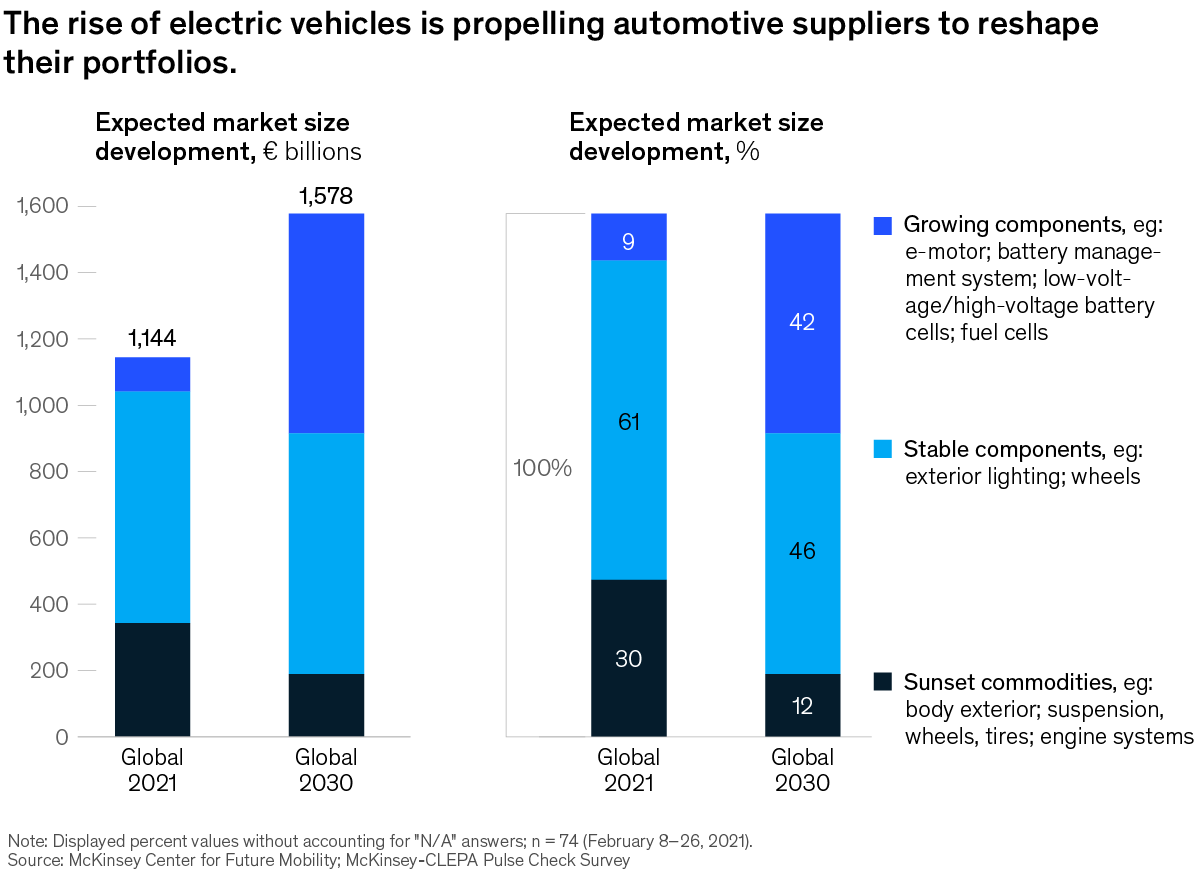
See today’s chart 
Also New 

How to stay cool as competition heats up in ice cream and yogurt Ice cream and yogurt industry leaders are rethinking innovation and consumer segmentation to keep pace in marketplaces changing faster than ever before. Stay sweet 


The Committed Innovator: A conversation with Temasek’s Pradyumna Agrawal The Singaporean state investment company’s managing director for blockchain talks about business building in a world still mystified by the underlying technology of blockchain. Build the blockchain 
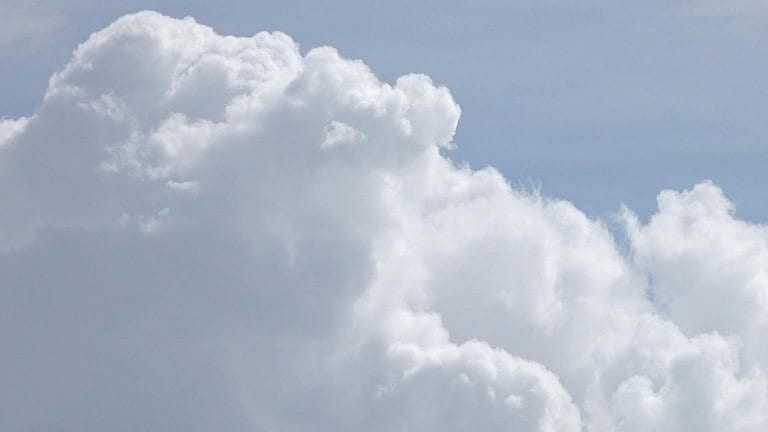

Decarbonizing the world’s industries: A net-zero guide for nine key sectors The sectors that produce the majority of global greenhouse-gas emissions face a steep challenge to decarbonize, but our research shows that solutions are within reach. In many cases, a transformation is well underway. This collection draws together articles and reports that lay out a pathway to net zero for nine emissions-intensive industries. Understand the options 


Follow our thinking 



Share these insights Did you enjoy this newsletter? Forward it to colleagues and friends so they can subscribe too.
Was this issue forwarded to you? Sign up for it and sample our 40+ other free email subscriptions here.This email contains information about McKinsey’s research, insights, services, or events. By opening our emails or clicking on links, you agree to our use of cookies and web tracking technology. For more information on how we use and protect your information, please review our privacy policy. You received this email because you subscribed to the Daily Read newsletter. Manage subscriptions | Unsubscribe Copyright © 2022 | McKinsey & Company, 3 World Trade Center, 175 Greenwich Street, New York, NY 10007
by "McKinsey Daily Read" <publishing@email.mckinsey.com> - 06:51 - 18 May 2022 -
Protecting the climate could create trillions in economic opportunity. Here’s how.
McKinsey&Company
See 11 big value pools .

Countdown to net zero In the news • The wrong side of history. A new UN report on climate change indicates that harmful carbon emissions are at a historic high, putting the planet on a pathway to global warming of more than double the 1.5°C target agreed to in the 2015 Paris Agreement. Although carbon pollution temporarily dipped amid the global lockdowns of the early COVID-19 crisis, emissions have since rebounded. However, the report also argues that it is still possible to cut emissions in half by 2030. Creating more walkable cities, electrifying transport, and removing carbon from the atmosphere can help. [WaPo] • Commodities crunch. The war in Ukraine, supply chain snarls, and record-high prices of commodities have led some experts to fear that the world’s transition to clean energy could intensify inflation. Soaring demand for minerals used for electric vehicles, solar panels, wind turbines, and electrical grids could lead to inflationary prices and supply shortages, they say. But while damage from a hotter climate will likely be permanent, a temporary shortfall of critical minerals could be eased through innovation (for instance, creating batteries that use less cobalt) and improving technology and recycling. [Bloomberg] 
Smart companies recognize the opportunity in sustainability investments, particularly as more stakeholders demand net-zero commitments. 
On McKinsey.com • A $12 trillion opportunity. Shifting from high- to low-emissions assets could create the largest capital reallocation in history. That would spur booming demand for climate-friendly goods and services, as well as the technologies, equipment, and infrastructure needed to produce them. Eleven value pools—including transport, buildings, power, and water—may generate more than $12 trillion in annual revenues by 2030. • Playing offense is the best defense. As more stakeholders demand net-zero commitments, companies that act quickly can tap into the revenue growth that the transition could bring, while also delivering environmental benefits. Instead of playing defense and trying to minimize sustainability-related risks, companies can create value by going on the offensive—for instance, by building green businesses. See the latest edition of the McKinsey Quarterly Five Fifty for the clean-energy transition’s biggest opportunities. — Edited by Kanika Punwani Go clean and green 
Was this forwarded to you? Sign up here. Or send us feedback — we’d love to hear from you. 

Follow our thinking 


This email contains information about McKinsey’s research, insights, services, or events. By opening our emails or clicking on links, you agree to our use of cookies and web tracking technology. For more information on how we use and protect your information, please review our privacy policy. You received this email because you subscribed to the On Point newsletter. Manage subscriptions | Unsubscribe Copyright © 2022 | McKinsey & Company, 3 World Trade Center, 175 Greenwich Street, New York, NY 10007
by "McKinsey On Point" <publishing@email.mckinsey.com> - 12:16 - 18 May 2022 -
Day 2 of QlikWorld is about to begin
QlikWorld 2022
Discover the future of data. And get ready to be inspired.
QlikWorld Day 2 is almost here.
May 17-19, 2022

Important info for the event.
We’re ready to kick off the second day of QlikWorld with inspiring keynotes, the Global Transformation Awards, and more.
On Wednesday, May 18th, QlikWorld runs:
12:00 PM – 4:30 PM SGT
With only a few hours until the event goes live, here's a reminder of how to log in:
Your login details
- URL: https://ve.on24.com/vshow/Qlik_Virtual_01/lobby/18938
- Your email: info@learn.odoo.com
- Password: 2eJh97tr3
Language preference: Once logged in, please select your language by clicking on the My Profile link in the left navigation.
You don’t need to download any special software, and you can join us at any time from any internet-enabled device.
Want to test your device?
If you would like to test your device before the event, you can use this test link here.Get in touch if you have any issues or questions: webinars@qlik.com. We look forward to seeing you!
By registering for QlikWorld, you understood and agreed that the following details will be visible to other attendees during the event: your name, company name, industry and email address. If you do not want these details to be visible, you will need to change your profile settings at the beginning of the event.


 QlikTech Singapore Pte Ltd. | 9 Temasek Boulevard, #27-01/03 Suntec Tower Two | Singapore 038989 | Tel: +65 6690 7000 | Privacy Policy
QlikTech Singapore Pte Ltd. | 9 Temasek Boulevard, #27-01/03 Suntec Tower Two | Singapore 038989 | Tel: +65 6690 7000 | Privacy Policy
by "Qlik" <QlikWorld@Qlik.com> - 11:00 - 17 May 2022 -
Statista | Activate your free Account
Statista

Dear Mr. Khayer,
thank you for joining Statista, the leading statistics portal on the internet.
Final step: Activate Account
Please note that you may access and download all our free statistics after account activation.
For login, please use username and password you entered during the registration procedure.
Sincerely,
Your Statista TeamThe activation link above does not work? Please copy this link directly to the address bar of your browser:
https://www.statista.com/register/check/3iroOZdp3wMUXmLlE-gFS98EMWK6zQ0IpwDx6KSSqBc=/MADTLdE4h8Ejl9sp2mKuvQ==
Contact
Do you have any questions for our customer service team? If so, give us a call at +1 (212) 433 2270 or send an e-mail to support@statista.com .
For Europe please contact +44 (0)20 8189 7000 or eu.support@statista.com (Mon - Fri, 9:30am - 5pm, GMT).Imprint
Statista, Inc.
3 World Trade Center at 175 Greenwich Street
36th Floor
New York, NY 10007
United StatesRegarding data protection: Information about the timing of deleting personal data, the countries where we save data (e.g., U.S., EU, Singapore), and the companies we collaborate with can be found in our privacy statement.
by support@statista.com - 10:42 - 17 May 2022 -
แบบสอบถามการแนะนำสินค้าและบริการของ Schneider Electric ประจำปี 2565
Schneider Electric
การทำแบบสอบถามการแนะนำสินค้าและบริการ ประจำปี 2565Campaign การทำแบบประสอบถามการแนะนำสินค้าและบริการของ Schneider Electric ประจำปี 2565 พร้อมกันทั่วโลก เริ่มตั้งแต่ 5 พ.ค. ถึง 17 มิ.ย. 2565 โดยเราได้ทำการจ้างบริษัท ZOOP Mobility Network Inc. เป็นผู้ดำเนินการสำรวจทางโทรศัพท์ภายใต้หมายเลข: +6564847877
จึงเรียนมาเพื่อทราบ โดยเราจะนำทุกความคิดเห็นจากท่านมาปรับปรุงและพัฒนาเพื่อให้ท่านได้รับประสบการณ์ที่ดียิ่งขึ้นกับสินค้าและบริการของ Schneider Electric
จุฑามาศ เจริญประสิทธิ์
ผู้จัดการด้านความพึงพอใจลูกค้า
บริษัท Schneider Electric Thailand+ Lifecycle Services From energy and sustainability consulting to optimizing the life cycle of your assets, we have services to meet your business needs. Schneider Electric
46 Rungrojthanakul Building. 1st, 10th, 11th Floor, Ratchadapisek Road. Huaykwang
Bangkok - 10310, Thailand
Phone +662 617 5500© 2022 Schneider Electric. All Rights Reserved. Schneider Electric is a trademark and the property of Schneider Electric SE, its subsidiaries and affiliated companies. All other trademarks are the property of their respective owners.
by "Schneider Electric" <reply@se.com> - 10:01 - 17 May 2022 -
Advanced recycling: Opportunities for growth
the Daily read
Understand green solutions .
Share this email 



AN ARTICLE A DAY, PICKED BY OUR EDITORS 
It’s no surprise that sustainability is on the minds of both companies and consumers. Many companies have made public commitments to sell goods that have less impact on the environment, and consumers want to buy products made from recycled plastics. This may be an opportunity for advanced-recycling technologies, which could expand the recycling landscape and produce plastics that are suited for applications such as packaging for food. Check out a new article that explores how this could be a major win for consumers, companies, and the environment. — Joyce Yoo, digital editor, New York 
Advanced recycling: Opportunities for growth As interest in the circular economy grows, emerging recycling technologies that are complementary with mechanical recycling are accelerating. Understand green solutions 

Quote of the Day “Health equity is also a driver for growth. . . . From a purely economic standpoint, it makes much more sense to have a healthy, productive population than to have a population that is suffering from disease.” —Akram Bouchenaki, CEO of Abdul Latif Jameel Health, on healthcare disparities in "Partnering for health equity: ALJ Health’s Akram Bouchenaki" 
Chart of the Day 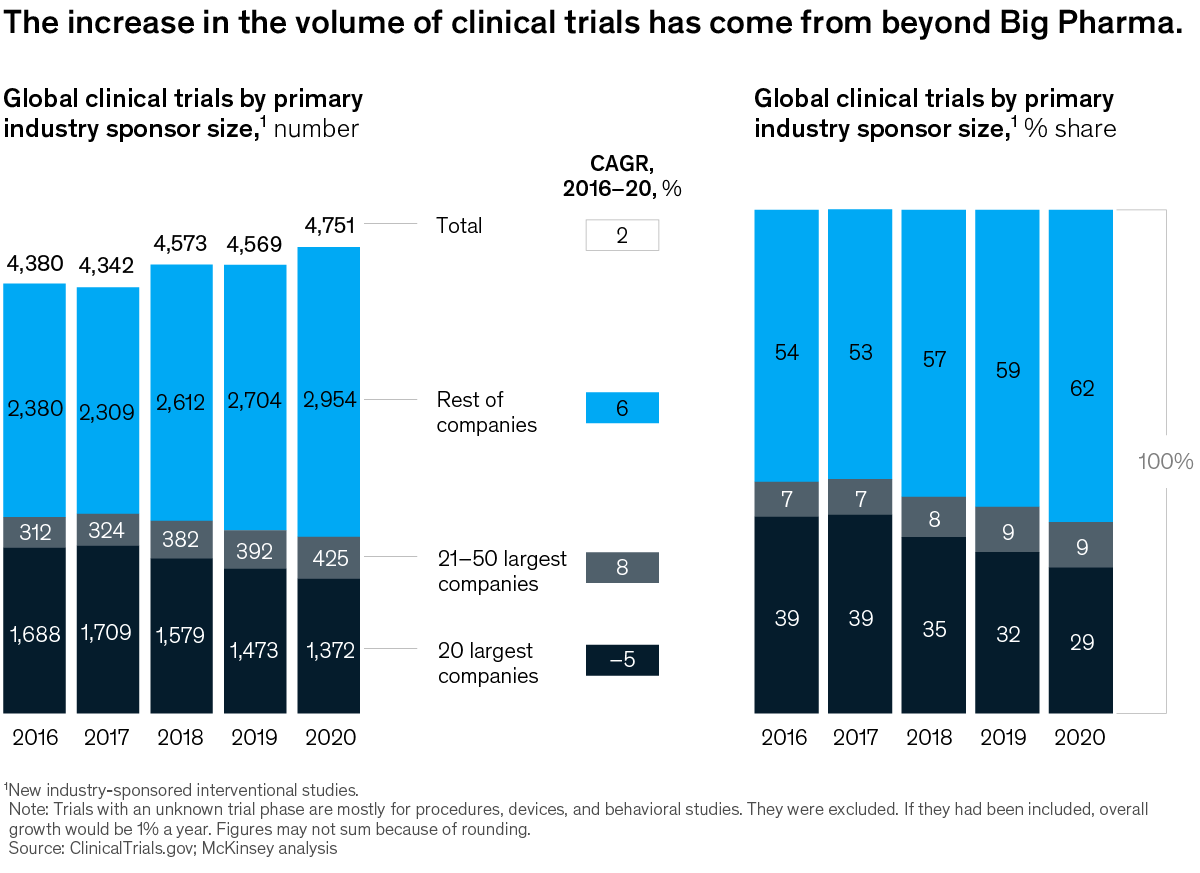
See today’s chart 
Also New 

Companies that care: Lessons from a unicorn founder and his purpose-driven investor Doing good may also be a good investment—and potentially transformative for the world. Two leaders on the front lines discuss the current landscape and what’s next. Invest in purpose 


Blue carbon: The potential of coastal and oceanic climate action Nature-based climate solutions in the world’s oceans can play an important role in conservation and carbon abatement efforts worldwide. Protect natural resources 


Box’s Aaron Levie on navigating SaaS’ several stages of growth After nearly two decades leading the file-sharing company, its co-founder and CEO talks about how his understanding of value in enterprise software has evolved. Get perspective 


Follow our thinking 



Share these insights Did you enjoy this newsletter? Forward it to colleagues and friends so they can subscribe too.
Was this issue forwarded to you? Sign up for it and sample our 40+ other free email subscriptions here.This email contains information about McKinsey’s research, insights, services, or events. By opening our emails or clicking on links, you agree to our use of cookies and web tracking technology. For more information on how we use and protect your information, please review our privacy policy. You received this email because you subscribed to the Daily Read newsletter. Manage subscriptions | Unsubscribe Copyright © 2022 | McKinsey & Company, 3 World Trade Center, 175 Greenwich Street, New York, NY 10007
by "McKinsey Daily Read" <publishing@email.mckinsey.com> - 06:45 - 17 May 2022 -
[Live Webinar] How to Create an Optimized API Development Process
Join to learn some of best practices in API development.Hi there,
Successful digital strategies rely on delivering quality and consistent APIs. To do so, you need an integrated and optimized API development workflow that ensures quality while improving efficiency.
With SmartBear, customers can launch a scalable API program with a central platform for OpenAPI standards, API design, and collaboration, coupled with a single UI for functional, performance, and security testing. With our full suite of API development and testing tools, you can deliver high-quality APIs at speed and scale.
As leaders in API Development, we’ve shown thousands of API developers and testers new and exciting ways to build efficiency and scale into their API development processes.
Join us on May 18th for this informative session as we review some best practices in API development where you’ll learn how to:- Enforce API standards across your organization
- Reduce API development time and effort
- Improve overall API quality
How to Create an Optimized API Development Process
Live May 18th
Can't make the live session? Register and we will send you the recording!
We hope you can join us,
Molly
This email was sent to info@learn.odoo.com by SmartBear Software, 450 Artisan Way, Somerville, MA. 02145, 617.684.2600, www.smartbear.com. We hope you found this email of interest. However, we value your privacy. Please click here to Unsubscribe or manage mail preferences. Privacy Policy.
by "Molly from SmartBear" <readyapi-team@smartbearmail.com> - 10:54 - 17 May 2022 -
Introducing: Remote Events!
Introducing: Remote Events!
Hi MD,
It's here! Say hello to our brand new Remote Events page. Here's just a little bit of what you can expect:
- A one-stop shop for exclusive, expert-led events and webinars.
- Community-driven discussions and collaborations.
- Incredible opportunities to connect with business peers and leaders.
We hope to see you again soon!
The Remote Team
Expanding your global team?
We've got you covered.
You received this email because you are subscribed to Events communication from Remote Technology, Inc.
Update your email preferences to choose the types of emails you receive.
Unsubscribe from all future emailsRemote Technology, Inc.
Copyright © 2022 Remote Technology, Inc. All rights reserved.
18 Bartol St. #1163 San Francisco California
by "Remote" <hello@remote-comms.com> - 08:02 - 17 May 2022 -
โซลูชันที่คุณต้องการเพื่อเปิดการใช้งาน Edge
Schneider Electric
แก้ปัญหาความท้าทายด้านโครงสร้างพื้นฐานของ Edge Computingการติดตั้ง Edge Computing (ไอทีแบบกระจาย) ได้กลายเป็นเรื่องสำคัญทางธุรกิจมากขึ้น การปรับใช้และใช้งาน IT edge ของเครือข่ายนั้นมาพร้อมกับความท้าทายที่ไม่เหมือนใคร การแก้ปัญหาเหล่านี้ต้องแยกจากวิธีการแบบเดิมๆ ในการเลือก กำหนดค่า ประกอบ ใช้งาน และบำรุงรักษาระบบเหล่านี้
เอกสารนี้อธิบายรูปแบบใหม่ที่กำลังเกิดขึ้นกับระบบนิเวศแบบบูรณาการของพันธมิตร ผู้ขาย และผู้ใช้ปลายทาง ระบบนิเวศนี้และโซลูชันศูนย์ข้อมูลขนาดเล็กแบบบูรณาการที่ผลิตขึ้น ช่วยลดความท้าทายเฉพาะของ edge แอปพลิเคชัน+ Lifecycle Services From energy and sustainability consulting to optimizing the life cycle of your assets, we have services to meet your business needs. Schneider Electric
46 Rungrojthanakul Building. 1st, 10th, 11th Floor, Ratchadapisek Road. Huaykwang
Bangkok - 10310, Thailand
Phone +662 617 5500© 2022 Schneider Electric. All Rights Reserved. Schneider Electric is a trademark and the property of Schneider Electric SE, its subsidiaries and affiliated companies. All other trademarks are the property of their respective owners.
by "Schneider Electric" <reply@se.com> - 06:15 - 17 May 2022 -
Birth rates are trending down: Is the population in trouble?
McKinsey&Company
Why leaders should care about demographics .

Imagine all the people In the news • What’s the real story? The connection between population and economics can be murky. The US economy is often described as dynamic because the country’s population is more youthful than, say, Japan’s. Between 2000 and 2019, the US economy grew 46% compared with Japan’s 26%. But Japan’s growth occurred despite a declining working-age population, while its per capita growth rate for those aged 16 to 64 was 5% higher than that in the US. Other trends are clearer—for example, declining fertility rates in Europe, South Korea, and the US, which may make economic growth in those regions harder to achieve. [FT] • Not so fast. Fertility isn’t the only factor in population growth or decline. Deaths and immigration are just as important. In 2016, the number of immigrants to the US exceeded the number of people leaving by more than one million. But immigration has since cratered, falling below 250,000 in 2021. And about that declining fertility rate? It’s sometimes regarded as a sign of female empowerment. But that, too, may be simplistic. There’s a growing gap between the number of children Americans say they want and the number of children they have. One possible reason: caring for children has become too expensive. [Atlantic] 
“One of the coolest things about demography is that it’s a window to our past and a window to our future. It’s the closest thing to a crystal ball that we have.” 
On McKinsey.com • Billions and billions. Since 1975, the global population has increased by one billion people every 11 to 12 years, and the planet is now approaching the eight-billion-people mark. What does it mean for this many people to exist? It’s easy to cite smart-sounding population stats without really understanding their implications. Fertility, mortality, and migration all influence population trends, but there’s a great divide between richer and poorer countries that affects these three variables, says political-demography expert Dr. Jennifer Sciubba. • Staying close to home. In the book 8 Billion and Counting: How Sex, Death, and Migration Shape Our World, Dr. Sciubba provides an overview of global demographic trends. One discovery: migration is rare. During speaking engagements, she often asks audiences, “What proportion of the world’s population do you think lives outside the country in which they were born?” Most say 20 to 50%, but the right answer for the past 50 years has been 2 to 4%. In a recent conversation with McKinsey, she describes these and other findings and explains why there’s no need to panic about population trends. — Edited by Heather Byer Read between the (trend) lines 
Was this forwarded to you? Sign up here. Or send us feedback — we’d love to hear from you. 

Follow our thinking 


This email contains information about McKinsey’s research, insights, services, or events. By opening our emails or clicking on links, you agree to our use of cookies and web tracking technology. For more information on how we use and protect your information, please review our privacy policy. You received this email because you subscribed to the On Point newsletter. Manage subscriptions | Unsubscribe Copyright © 2022 | McKinsey & Company, 3 World Trade Center, 175 Greenwich Street, New York, NY 10007
by "McKinsey On Point" <publishing@email.mckinsey.com> - 12:53 - 17 May 2022 -
Your login details for QlikWorld Day 1
QlikWorld 2022
Discover the future of data. And get ready to be inspired.
Get ready for QlikWorld.
May 17-19, 2022

The speakers are ready. The sessions are lined up. And we can’t wait for you to join us.
On Tuesday, May 17th, QlikWorld runs:
12:00 PM – 4:30 PM SGT
Your login details
- URL: https://ve.on24.com/vshow/Qlik_Virtual_01/lobby/18938
- Your email: info@learn.odoo.com
- Password: 2eJh97tr3
Language preference: Once logged in, please select your language by clicking on the My Profile link in the left navigation.
You don’t need to download any special software, and you can join us at any time from any internet-enabled device.
Want to test your device?
If you would like to test your device before the event, you can use this test link here.Get in touch if you have any issues or questions: webinars@qlik.com. We look forward to seeing you!
By registering for QlikWorld, you understood and agreed that the following details will be visible to other attendees during the event: your name, company name, industry and email address. If you do not want these details to be visible, you will need to change your profile settings at the beginning of the event.


 QlikTech Singapore Pte Ltd. | 9 Temasek Boulevard, #27-01/03 Suntec Tower Two | Singapore 038989 | Tel: +65 6690 7000 | Privacy Policy
QlikTech Singapore Pte Ltd. | 9 Temasek Boulevard, #27-01/03 Suntec Tower Two | Singapore 038989 | Tel: +65 6690 7000 | Privacy Policy
by "Qlik" <QlikWorld@Qlik.com> - 11:00 - 16 May 2022 -
How to stay cool as competition heats up in ice cream and yogurt
the Daily read
Stay sweet .
Share this email 



AN ARTICLE A DAY, PICKED BY OUR EDITORS 
Who doesn’t have a favorite ice cream flavor? But when it can seem like there’s 34 factors to consider in the cold-foods aisle—inflation, your grocery budget, organic versus locally sourced versus a dairy alternative, and what about yogurt?—it can give consumers a headache that’s more than just a brain freeze. The old, steady ice cream and yogurt marketplace is melting away under shifting priorities and quick swap-outs: Gen Z is most likely to abandon their trusty favorites, trading down for cost, or up for premium taste or more natural ingredients. And with the ice cream market roughly tracking the economy, dairy fits the trend of consumers flitting from brand to brand to balance health, wealth, and their own changing tastes. Don’t miss a new article on what ice cream says about us all. — Sarah Skinner, digital editor, New York 
How to stay cool as competition heats up in ice cream and yogurt Ice cream and yogurt industry leaders are rethinking innovation and consumer segmentation to keep pace in marketplaces changing faster than ever before. Stay sweet 

Quote of the Day “At every stage of maturing as an organization, you still need to be really good at the prior stages. It’s not as if once you finally get to the resource allocation or capital allocation phase that it becomes your exclusive focus.” —Aaron Levie, co-founder and CEO of Box, on the value metrics to drive the company forward in "Box’s Aaron Levie on navigating SaaS’ several stages of growth" 
Chart of the Day 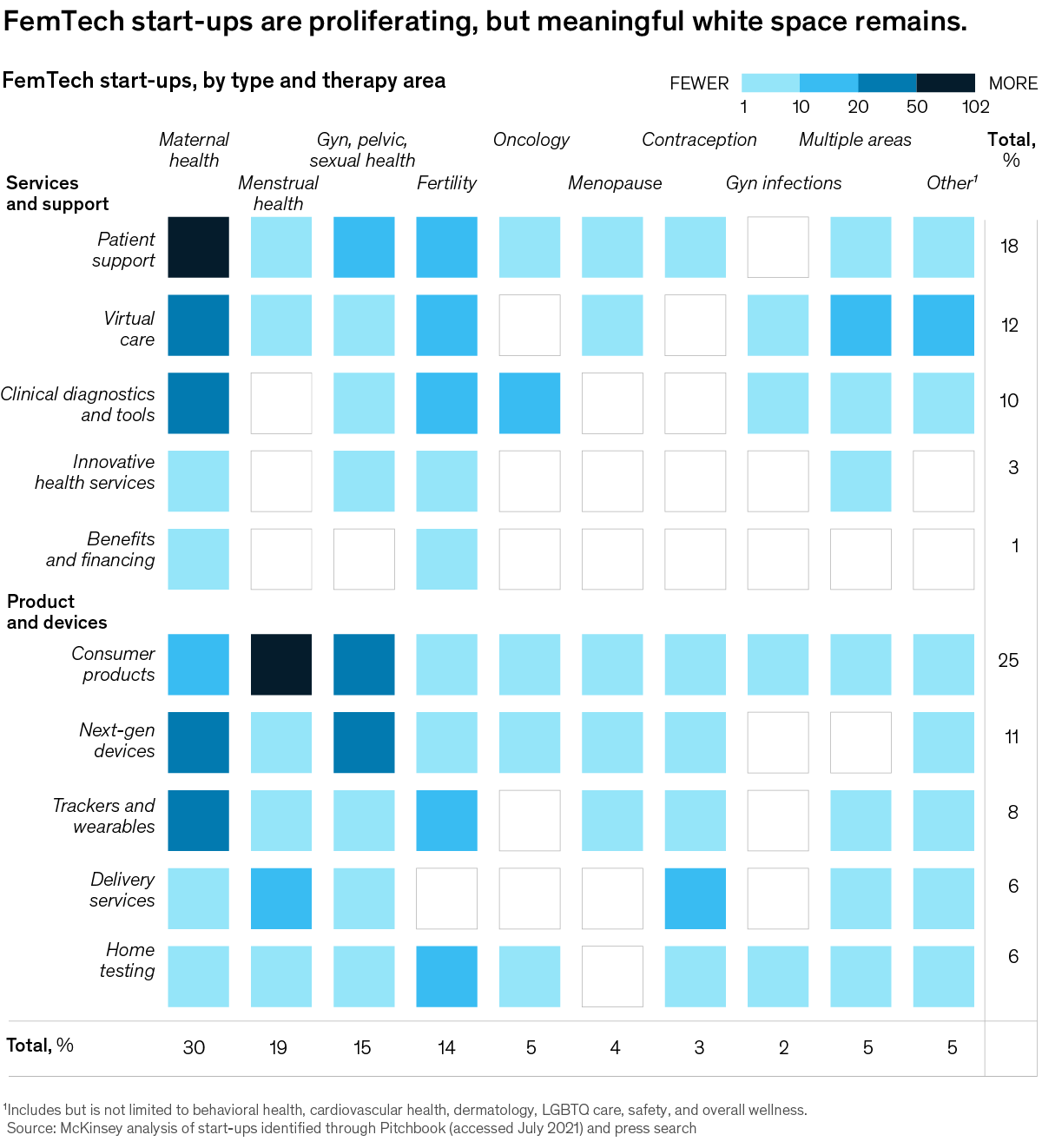
See today’s chart 
Also New 

Assessing the lingering impact of COVID-19 on the nursing workforce Analysis suggests potential instability and workforce gaps in the US healthcare sector. A call to action for all stakeholders could help. Support healthcare workers 
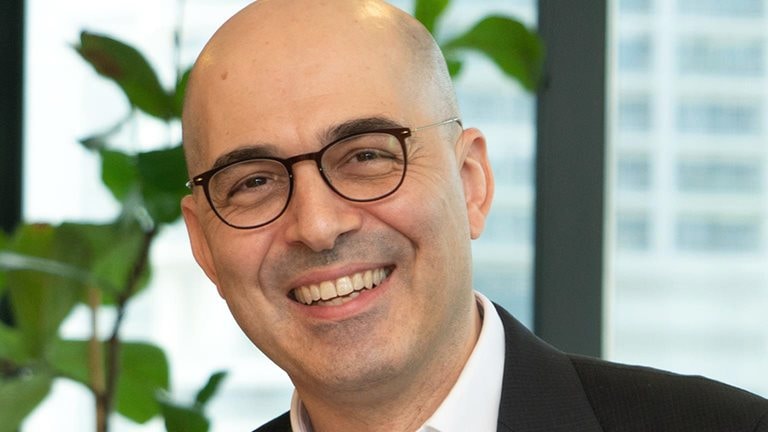

Partnering for health equity: ALJ Health’s Akram Bouchenaki The CEO of Abdul Latif Jameel Health explains why health equity is essential—now more than ever. Bridge the gaps 


Reimagining higher education in MENAP Stakeholders can consider a range of bold initiatives to transform higher education and create new opportunities for students in the Middle East, North Africa, and Pakistan. Build a better future 


Follow our thinking 



Share these insights Did you enjoy this newsletter? Forward it to colleagues and friends so they can subscribe too.
Was this issue forwarded to you? Sign up for it and sample our 40+ other free email subscriptions here.This email contains information about McKinsey’s research, insights, services, or events. By opening our emails or clicking on links, you agree to our use of cookies and web tracking technology. For more information on how we use and protect your information, please review our privacy policy. You received this email because you subscribed to the Daily Read newsletter. Manage subscriptions | Unsubscribe Copyright © 2022 | McKinsey & Company, 3 World Trade Center, 175 Greenwich Street, New York, NY 10007
by "McKinsey Daily Read" <publishing@email.mckinsey.com> - 06:22 - 16 May 2022 -
¯\_(ツ)_/¯ Whose fault is it anyway? Start debugging today with 100GB free.
It can be frustrating trying to figure out why your application performance is lagging or continually producing errors—particularly when you’re using a mix of third-party services, legacy components, business APIs, and modern cloud solutions.
If you haven’t finished instrumenting your apps and systems yet with our new and easier to use guided install, that’s a lot of free metrics, events, logs, and traces going to waste with your 100GB of free data available each month in New Relic.
INSTALL NOW Best of all, you can instantly drill down on errors down to the log level, or use distributed tracing to see if it was your code or an external service causing the issue.
Happy monitoring,MaxNew Relic
188 Spear Street, San Francisco, CA 94105 US
by "Max Francisco from New Relic" <mfrancisco@newrelic.com> - 12:01 - 16 May 2022 -
Changing behaviors (your own included): A leader’s guide
Leading Off
Well behaved .
Share this email 



ESSENTIALS FOR LEADERS AND THOSE THEY LEAD 
In the arcade game Whac-A-Mole, players whack plastic moles with a mallet as the hapless creatures pop their heads out of burrows, but as soon as they whack one, a new one pops up. That’s similar to what happens when organizations implement behavioral-change programs without preparation: they may pound one mole (behavior) into its hole only to find another immediately rearing its head. Organizations can’t move forward with change unless they can create and reinforce behavioral changes. But the task becomes daunting in a remote or hybrid work environment, which rarely allows for face-to-face reinforcement. This week, let’s focus on what you can do to build the behaviors and capabilities needed to effect lasting change. AN IDEA 
Change behaviors through innovation, skill building, and role modeling In other words: show, don’t tell. At a time when organizations must build new skills to renew themselves, it’s worthwhile for leaders to reinforce a positive environment and different ways of working. During the COVID-19 pandemic, for instance, several companies used the situation as an opportunity to try out new ideas, protect the core of their organizations, and inspire and energize their workers. One organization redeployed 1,000 retail-store employees to internal sales and retrained them in three weeks. Another tried to find temporary jobs for displaced team members by partnering with companies that were expanding their workforces. A leading company donated $10 million to expand online learning, and, in an inspiring example of role modeling, a manufacturer’s top executives deferred between 20 and 50 percent of their salaries. 
A BIG NUMBER 43% That’s the share of time that people habitually enact everyday actions, such as shopping or exercising, while thinking about something else, according to research by the Wood Habit Lab at the University of Southern California. Context often triggers habit-forming behavior—for example, the more often a behavior occurs within a certain location, the stronger a habit can become. In the current era of remote and distributed work, location might not help as a trigger, but leaders can still support their teams in building better workplace habits by providing the right context and cues. Changing cues in the environment by using formal mechanisms, such as subtle interventions or behavioral nudges, or offering personalized coaching is a powerful way to disrupt old habits or develop new ones. 

A QUOTE “All our life, so far as it has definite form, is but a mass of habits—practical, emotional, and intellectual.” That’s the 19th century psychologist William James on the vast influence that habit wields over people’s daily lives. In his lecture series Talks to Teachers on Psychology, James urged teachers to ensure that their pupils formed good habits that would eventually turn into automatic daily behaviors. Today’s business leaders seeking to cement lasting behavioral change can turn the power of habit to their advantage. Consider the “influence model,” which uses four key actions to win—and keep—employee commitment to organizational transformation. For example, helping people understand why the change is happening, instead of assuming that they already know the reason, can influence them to change their behavior. One way to do this is to develop a change story that describes the company’s new direction and why it is important. Another tactic is to instill a sense of control and competence in people, helping them develop better habits to achieve performance goals. 
A SPOTLIGHT INTERVIEW 
Want your change program to succeed? Before putting any formal mechanisms in place or defining any potentially desirable behaviors, understand your employees’ mindsets and why they’re behaving as they are. “As soon as you get into this mindset realm, you get to the root cause of why smart, hardworking, well-intentioned people aren’t already behaving in the way that you want them to behave from a management-practice standpoint,” says McKinsey’s Scott Keller in this podcast. “You’ve unlocked the key to transformation because if you can shift that mindset, people can’t go back.” For example, employees who are convinced that their job is to give customers what they want may perform entirely differently—and better—if they shift their mindset to believing that their job is to add value by helping customers understand what they really need. 
OUT OF TUNE 
It’s all too easy to focus solely on employees during a change program. “Leaders can make or break a company transformation,” say the authors of a McKinsey blog on improving leadership teams’ behaviors. Discord among senior leaders can destroy trust, skew priorities, and diminish employee engagement. Only 60 percent of leadership teams report being aligned on their purpose, and although most teams rank consistent communication as a priority, less than 40 percent report practicing it. To boost team harmony, identify and act on three to five behaviors that are most critical to delivering your organization’s value agenda. Lead by behaving well. — Edited by Rama Ramaswami, a senior editor in McKinsey’s Stamford office 

Follow our thinking 



Share these insights Did you enjoy this newsletter? Forward it to colleagues and friends so they can subscribe too.
Was this issue forwarded to you? Sign up for it and sample our 40+ other free email subscriptions here.This email contains information about McKinsey’s research, insights, services, or events. By opening our emails or clicking on links, you agree to our use of cookies and web tracking technology. For more information on how we use and protect your information, please review our privacy policy. You received this email because you subscribed to the Leading Off newsletter. Manage subscriptions | Unsubscribe Copyright © 2022 | McKinsey & Company, 3 World Trade Center, 175 Greenwich Street, New York, NY 10007
by "McKinsey Leading Off" <publishing@email.mckinsey.com> - 03:21 - 16 May 2022 -
To untangle supply chains solve three critical challenges, say top execs
McKinsey&Company
How to relieve supply chain pain .

Supply chain salve In the news • Mix things up. Diversifying global supply chains may be key to easing vulnerabilities that the COVID-19 pandemic exposed, according to research by the International Monetary Fund. If one big supplier runs short of labor, that can drop an economy’s output by nearly 1%. But greater diversification among source countries could cut global GDP losses by roughly half, to 0.4%, the IMF found. IMF’s model suggests that using more foreign inputs and being able to substitute inputs across suppliers can increase resilience to supply shocks. “Dismantling global value chains is not the answer,” the researchers stated. [Reuters] • Pain at the ports. Tight restrictions aimed at limiting COVID-19 transmission in China mean more lockdowns—and more supply chain constraints. Shanghai is the biggest container port in the world and has been locked down since late March. By one estimate, 30% of global shipping delays are originating in Asia. Those delays are massive: one in five cargo ships is stranded in a port somewhere in the world. The bottlenecks have a snowball effect, forcing cost increases for businesses and, analysts say, could further escalate inflation. [Fortune] 
“Before the pandemic, the rationale for automation of supply chains was financial. Today it is as much—if not more—about risk mitigation as it is about financial performance.” 
On McKinsey.com • Under pressure. As global supply chains buckle under the weight of demand, transportation and logistics experts gathered at the UN’s 84th Inland Transport Committee meeting to parse the industry’s challenges. Speaking with McKinsey’s Tom Bartman, the executives noted three big challenges: global labor shortages (partially due to an aging workforce and limited engagement with young people), a lack of crucial equipment needed to decarbonize fleets, and the ripple effect of bottlenecks at crucial supply chain junctures. • Logistics lifelines. These hurdles aren’t insurmountable, but they will require better visibility and coordination up and down the supply chain and for organizations to rethink priorities, the executives said. The panelists reviewed how companies are navigating the ongoing unpredictability and discussed options for greater involvement from public-sector actors, which could help to ease the strain. Watch the video for two critical things supply chain executives are doing to relieve disruptions in the supply chain. — Edited by Sarah Thuerk Clear the bottlenecks 
Was this forwarded to you? Sign up here. Or send us feedback — we’d love to hear from you. 

Follow our thinking 


This email contains information about McKinsey’s research, insights, services, or events. By opening our emails or clicking on links, you agree to our use of cookies and web tracking technology. For more information on how we use and protect your information, please review our privacy policy. You received this email because you subscribed to the On Point newsletter. Manage subscriptions | Unsubscribe Copyright © 2022 | McKinsey & Company, 3 World Trade Center, 175 Greenwich Street, New York, NY 10007
by "McKinsey On Point" <publishing@email.mckinsey.com> - 10:04 - 15 May 2022 -
The week in charts
the Daily read
The state of women healthcare workers, economic development in rural communities, and more .
Share this email 



ALL THE WEEK’S DATA THAT'S FIT TO VISUALIZE 
Our Charting the path to the next normal series offers a daily chart that helps explain a changing world—during the pandemic and beyond. In case you missed them, this week’s graphics explored the state of women healthcare workers, economic development in rural communities, evolving market conditions, the changing role of chief financial officers, and opportunities for building pharmaceutical pipelines. FEATURED CHART Stuck in neutral 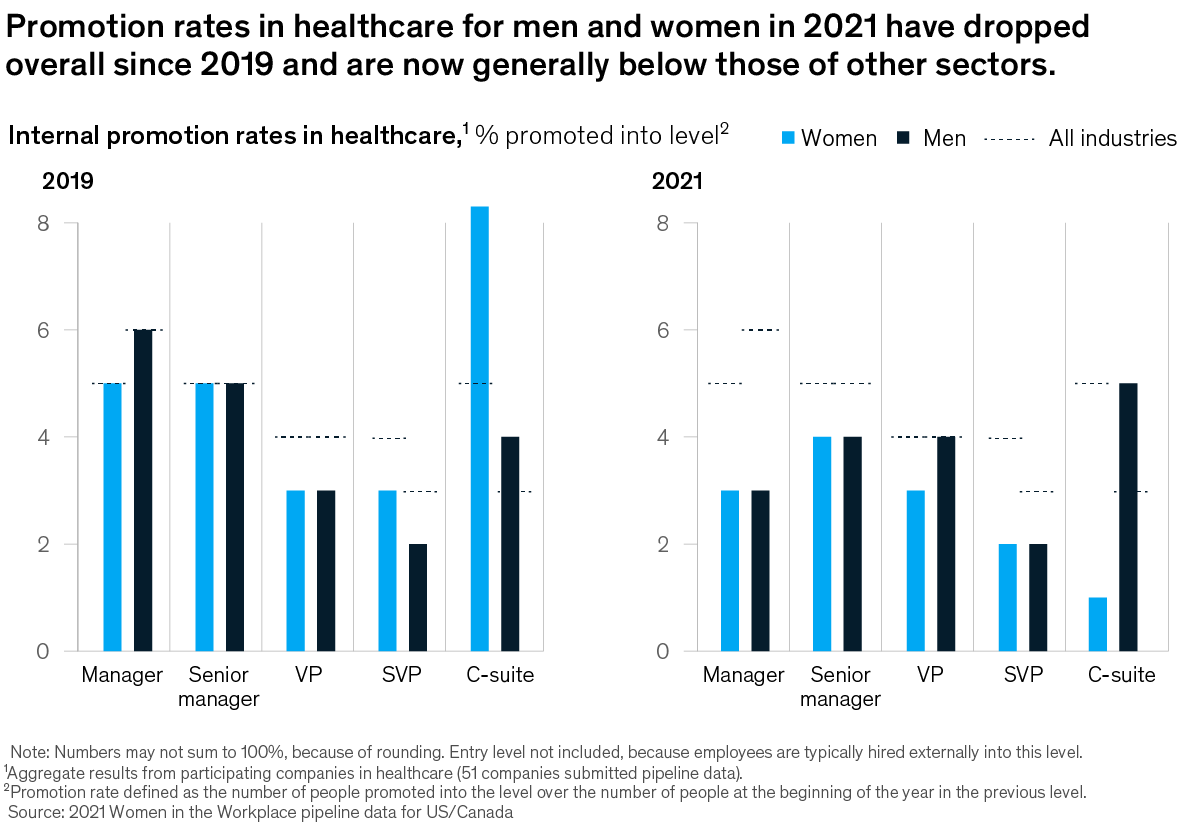
See more 



This week’s other select charts Helping rural America thrive? Right on the money The CFO’s growing influence Yields sign 

Follow our thinking 



Share these insights Did you enjoy this newsletter? Forward it to colleagues and friends so they can subscribe too.
Was this issue forwarded to you? Sign up for it and sample our 40+ other free email subscriptions here.This email contains information about McKinsey’s research, insights, services, or events. By opening our emails or clicking on links, you agree to our use of cookies and web tracking technology. For more information on how we use and protect your information, please review our privacy policy. You received this email because you subscribed to The Week in Charts newsletter. Manage subscriptions | Unsubscribe Copyright © 2022 | McKinsey & Company, 3 World Trade Center, 175 Greenwich Street, New York, NY 10007
by "McKinsey Week in Charts" <publishing@email.mckinsey.com> - 03:34 - 14 May 2022 -
A more productive environment for everyone
McKinsey&Company
Simple communication tweaks that make it happen .
Share this email 



McKinsey Classics | May 2022 
A more productive environment for everyone Let’s say you’re facing a “difficult conversation”—for example, informing a colleague that you’ll have to pull out of an important meeting the two of you have been planning for weeks. You start by baldly stating that you can’t attend it. Behavioral research shows that the other person’s brain then goes on defense, diverting scarce mental energy by launching an automatic “snap, sulk, or skulk” mode. Emotionally sophisticated neural machinery shuts down, and the quality of work declines. But suppose you take a different tack. You start by saying nice things about that person’s work. Then you add that you want to spend more time with your son, and it’s really important for you to participate in a tennis match with him that conflicts with the meeting, so you won’t be able to attend it. Your coworker thinks, “Wonderful! He’s such a great parent.” Both parties to the conversation remain on a high level of mental energy. You have just learned the “positive no” technique. Simple communication tweaks based on behavioral research can nudge employees into top form and create a more productive environment. For more, read our 2016 classic “How small shifts in leadership can transform your team dynamic.” — Roger Draper, editor, New York Learn these simple communication tweaks 



Related Reading 
It’s not about the office, it’s about belonging 

Your return-to-office announcements are missing the mark: Here’s how to get them right 

A leader’s guide: Communicating with teams, stakeholders, and communities during COVID-19 

Did You Miss Our Previous McKinsey Classics? 

Four principles of effective storytelling on social media Stories help build organizations and lead them through times of change. To learn the four principles that make such narratives effective, read “The power of storytelling: What nonprofits can teach the private sector about social media.” Learn how to tell stories on social media 





Follow our thinking 


McKinsey Insights - Get our latest
thinking on your iPhone, iPad, or Android

This email contains information about McKinsey’s research, insights, services, or events. By opening our emails or clicking on links, you agree to our use of cookies and web tracking technology. For more information on how we use and protect your information, please review our privacy policy. You received this email because you subscribed to our McKinsey Classics newsletter. Manage subscriptions | Unsubscribe Copyright © 2022 | McKinsey & Company, 3 World Trade Center, 175 Greenwich Street, New York, NY 10007
by "McKinsey Classics" <publishing@email.mckinsey.com> - 11:34 - 14 May 2022 -
¿Qué es el metaverso y qué significa para las empresas?
McKinsey&Company
Además, la evolución del papel del director financiero .
Comparte este email 



Destacados mensuales, Mayo de 2022 Es posible que haya notado un número creciente de ofertas de empleo que buscan talento especializado en el "metaverso". Pero ¿qué es exactamente el metaverso y por qué su organización debería prestarle atención? Este mes, nuestros artículos destacados profundizan en este fenómeno en desarrollo, así como en las realidades a las que se enfrentan las empresas que buscan contrata—y retener—a los mejores talentos tecnológicos. Otros temas destacados en el número de este mes son: - El rápido aumento de las responsabilidades del CFO
- El creciente mercado global de semiconductores
- Cómo los CEOs pueden gestionar con éxito el impacto de la inflación
- Por qué la invasión rusa de Ucrania puede llevar al sistema alimentario a una crisis mundial
Selección del editor 

¿Qué es el metaverso y qué significa para las empresas? Aún no existe una definición oficial del metaverso, pero las empresas no pueden darse el lujo de esperar a que haya una o a que el metaverso evolucione por completo para empezar a experimentar e invertir en él. Comprenda las oportunidades 





Tectónica del talento tecnológico: Diez nuevas realidades para encontrar, retener y desarrollar talento Las grandes empresas tradicionales pueden competir con éxito por el talento tecnológico, pero solo si están dispuestas a replantearse por completo su enfoque de recursos humanos. El talento tecnológico piensa y actúa de forma diferente. No se lo pierda 




LO MÁS DESTACADO DE ESTE MES 
En conversación: El nuevo mandato del director financiero Cómo los líderes financieros pueden conciliar y cumplir con sus crecientes carteras de responsabilidades. Comprenda el cambio de responsabilidades 

La década de los semiconductores: Una industria de un billón de dólares El sector mundial de semiconductores está preparado para una década de crecimiento y se prevé que se convertirá en una industria de un billón de dólares para 2030. Mire al futuro 

Navegar por la inflación: Un nuevo manual de estrategias para los CEOs Pocos directores generales se han enfrentado al reto de dirigir una empresa en un periodo de inflación como el actual. Las lecciones de los líderes fuertes y las medidas audaces pueden ayudar a los CEOs a tomar decisiones que solo están a su alcance. Tome medidas inteligentes 
El creciente riesgo de una crisis alimentaria global La guerra en Ucrania es una amenaza inminente para el suministro mundial de alimentos. Aquí hablamos sobre lo que está en juego y lo que se puede hacer para ayudar. Conozca los problemas 

La minería del litio: Cómo las nuevas tecnologías de producción podrían impulsar la revolución mundial de los vehículos eléctricos El litio es la fuerza motriz de los vehículos eléctricos, pero ¿podrá la oferta seguir el ritmo de la demanda? Las nuevas tecnologías y fuentes de suministro pueden cubrir el vacío. Manténgase al tanto 

Trazar el cero neto: Ideas sobre cómo podría ser la transición Conozca las oportunidades y los riesgos de la transición hacia las emisiones cero neto a través de ocho de nuestras recientes visualizaciones de datos. Concéntrese en el cero neto Esperamos que disfrute de los artículos en español que seleccionamos este mes y lo invitamos a explorar también los siguientes artículos en inglés. 
ALSO NEW Global Energy Perspective 2022 Capital investment is about to surge: Are your operations ready? Hybrid work: Making it fit with your diversity, equity, and inclusion strategy Author Talks: How to handle your work jerk Outsprinting the energy crisis As the cookie crumbles, three strategies for advertisers to thrive Author Talks: Actor Terry Crews wants you to open up Is worker power on the rise? Amid disruption, automotive suppliers must reimagine their footprints Overcoming global supply chain challenges How the fashion industry can get into a metaverse mindset Risk transformations: The heart, the art, and the science 
SPECIAL FEATURES 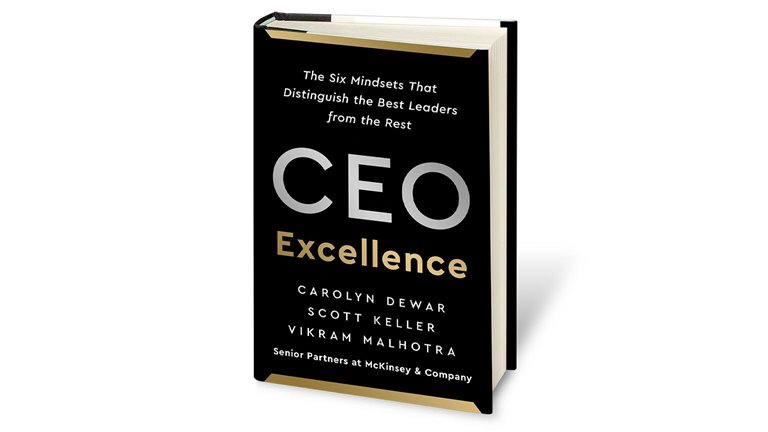
CEO Excellence Now a New York Times bestseller, the #CEOExcellenceBook dives into the six mindsets that distinguish the best leaders from the rest. Order now 

McKinsey for Kids Explore the world of gaming in this kid-friendly interactive. Game on 
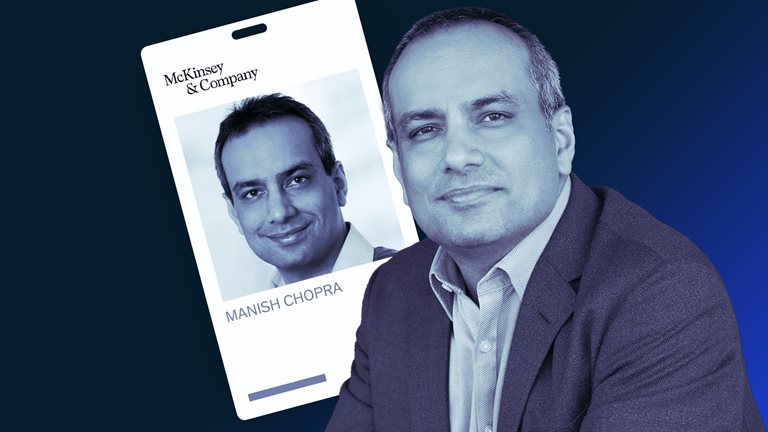
My Rookie Moment McKinsey senior colleagues discuss their early encounters with CEOs. Watch episode 8 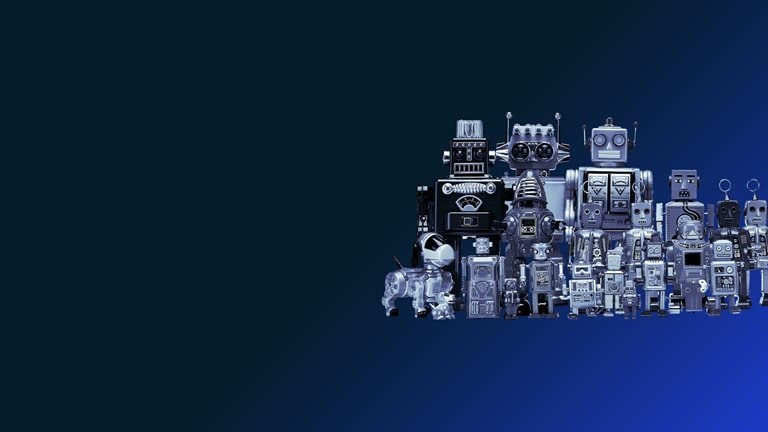
McKinsey Themes Essential reading on topics that matter. Get up to speed 

McKinsey Classics Effective storytelling can help build organizations and lead them through times of change. Read “The power of storytelling: What nonprofits can teach the private sector about social media.” Rewind 

Leading Off Read a sample of Leading Off, and sign up for it or any of our 40+ free email subscriptions. Subscribe — Curated by Eleni Kostopoulos, a digital publishing manager in McKinsey’s New York office 

Follow our thinking 


McKinsey Insights - Get our latest
thinking on your iPhone, iPad, or Android


Comparta estas ideas ¿Disfrutaste este boletín? Reenvíelo a colegas y amigos para que ellos también puedan suscribirse.
¿Se le remitió este articulo? Regístrese y pruebe nuestras más de 40 suscripciones gratuitas por correo electrónico aquí.Este correo electrónico contiene información sobre la investigación , los conocimientos, los servicios o los eventos de McKinsey. Al abrir nuestros correos electrónicos o hacer clic en los enlaces, acepta nuestro uso de cookies y tecnología de seguimiento web. Para obtener más información sobre cómo usamos y protegemos su información, consulte nuestra política de privacidad. Recibió este correo electrónico porque es un miembro registrado de nuestro boletín informativo Destacados. Manejar suscripciones | Cancelar Copyright © 2022 | McKinsey & Company, 3 World Trade Center, 175 Greenwich Street, New York, NY 10007
by "McKinsey Highlights" <publishing@email.mckinsey.com> - 08:58 - 14 May 2022 -
Digital transformation on the CEO agenda
the Daily read
Get better, faster .
Share this email 



AN ARTICLE A DAY, PICKED BY OUR EDITORS 
Digital transformation. It’s a phrase we come across a lot, but what does it really mean—and what does a successful digital transformation look like? “The point of digital transformation isn’t to become digital. It’s actually to generate value for the business,” says McKinsey senior partner, Rodney Zemmel, in a new episode of The McKinsey Podcast. Tune in and get up-to-date on what CEOs and other leaders should know as they embark on the transformation journey, including metrics that matter, common obstacles and how to navigate them, opportunities in tech talent, and more. — Joyce Yoo, digital editor, New York 
Digital transformation on the CEO agenda Successful digital transformations may not be as elusive as you think. The best CEOs know up front what success looks like—and what stands in their way. Get better, faster 

Quote of the Day “Social media, when it works the best, is a two-way street where not only are you engaging consumers in what you want to say but you’re listening to what they want to say and then are able to make changes, getting to the heart of what is emotionally resonating with consumers the most.” —Tamara Charm, McKinsey partner, on US consumer sentiment and behavior in a recent episode of the McKinsey on Consumer and Retail podcast 
Chart of the Day 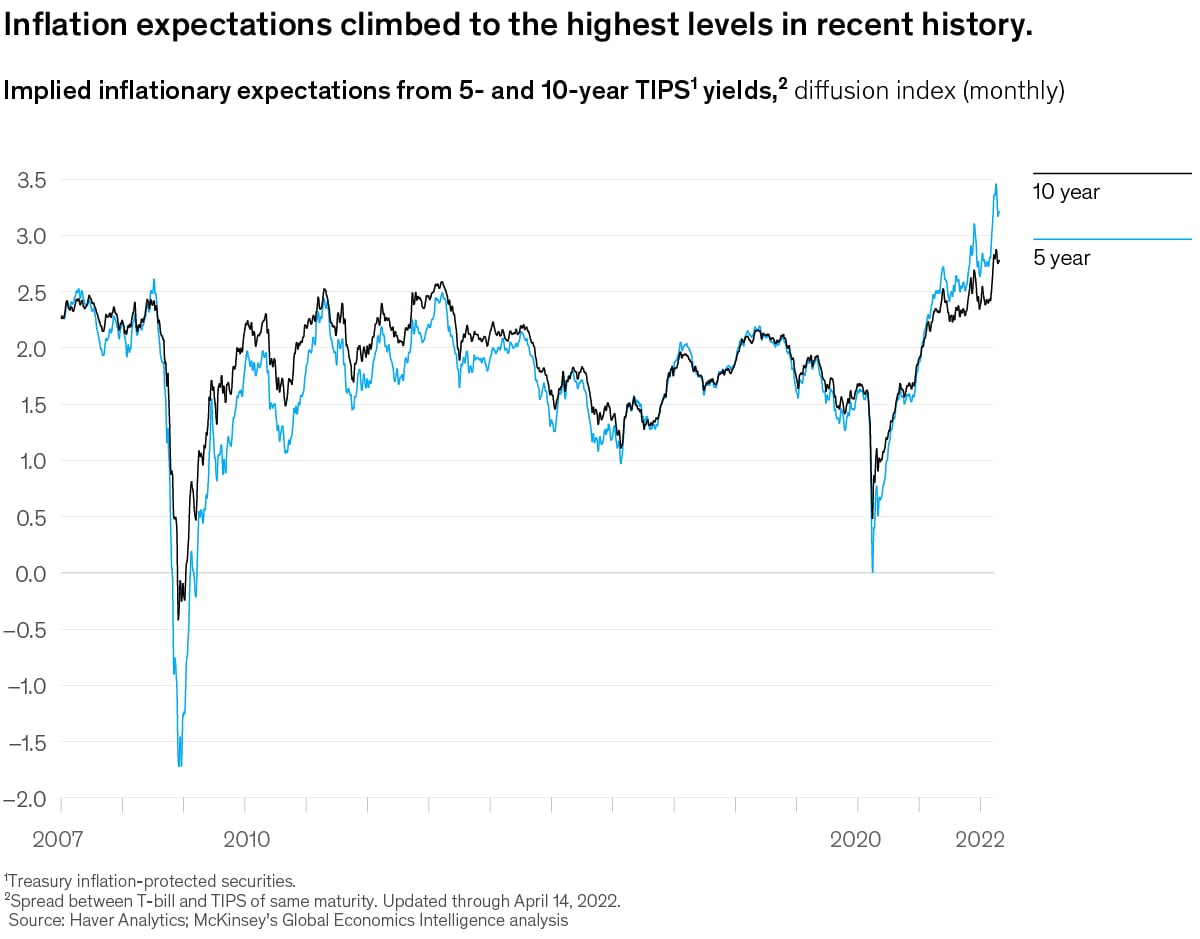
See today’s chart 
Also New 

Prepare now for the future of industrial services A 600-executive survey reveals how services organizations can adapt to a remote-first world by revamping their operating models and carefully tailoring commercial models to match. Get ready 
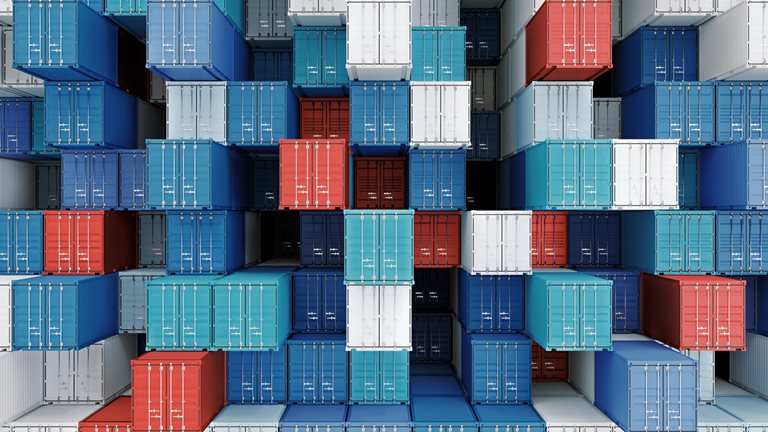

Global Economics Intelligence executive summary, April 2022 Amidst high inflation and the continuing war in Ukraine, strong demand persists; forecasting institutions trim growth estimates. Understand worldwide trends 


The McKinsey Crossword: May Flowers | No. 75 4-Down: Appreciate what is often ignored. Can you solve it? Play now 


Follow our thinking 



Share these insights Did you enjoy this newsletter? Forward it to colleagues and friends so they can subscribe too.
Was this issue forwarded to you? Sign up for it and sample our 40+ other free email subscriptions here.This email contains information about McKinsey’s research, insights, services, or events. By opening our emails or clicking on links, you agree to our use of cookies and web tracking technology. For more information on how we use and protect your information, please review our privacy policy. You received this email because you subscribed to the Daily Read newsletter. Manage subscriptions | Unsubscribe Copyright © 2022 | McKinsey & Company, 3 World Trade Center, 175 Greenwich Street, New York, NY 10007
by "McKinsey Daily Read" <publishing@email.mckinsey.com> - 06:23 - 13 May 2022 -
Can the automotive industry scale fast enough?
McKinsey&Company
Speed up .
Share this email 



New from McKinsey Quarterly 
Can the automotive industry scale fast enough? The rapidly increasing uptake of electric vehicles could transform the automotive ecosystem and promote even greater innovations. For that to happen, two imperatives need attention now. Speed up 



Related Reading 
Why the automotive future is electric 
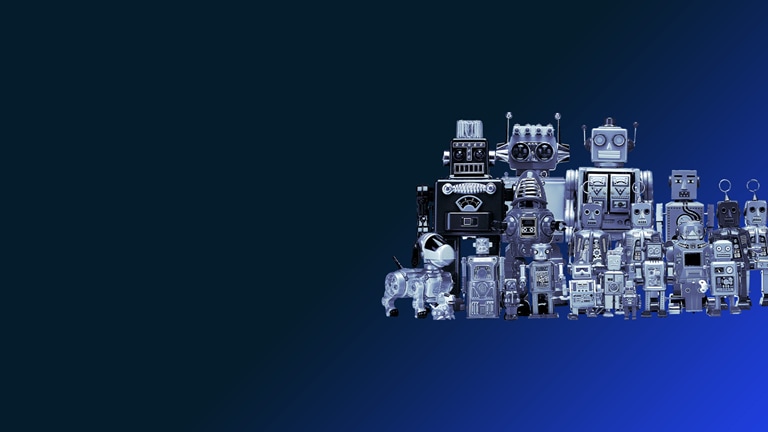
Get up to speed with McKinsey Themes 


Follow our thinking 


McKinsey Insights - Get our latest
thinking on your iPhone, iPad, or Android


Share these insights Did you enjoy this newsletter? Forward it to colleagues and friends so they can subscribe too.
Was this issue forwarded to you? Sign up for it and sample our 40+ other free email subscriptions here.This email contains information about McKinsey’s research, insights, services, or events. By opening our emails or clicking on links, you agree to our use of cookies and web tracking technology. For more information on how we use and protect your information, please review our privacy policy. You received this email because you subscribed to our McKinsey Quarterly alert list. Manage subscriptions | Unsubscribe Copyright © 2022 | McKinsey & Company, 3 World Trade Center, 175 Greenwich Street, New York, NY 10007
by "McKinsey Quarterly" <publishing@email.mckinsey.com> - 10:05 - 13 May 2022




